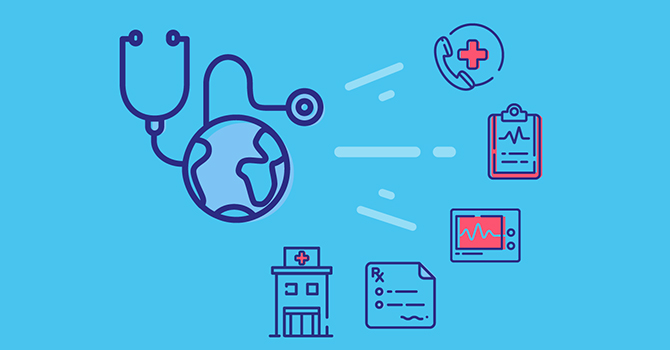The Relevance of Healthcare RCM in Enhancing Capital and Performance
The Relevance of Healthcare RCM in Enhancing Capital and Performance
Blog Article
A Comprehensive Overview on Exactly How Healthcare RCM Functions to Simplify Invoicing and Collections
Browsing the complexities of medical care earnings cycle administration (RCM) is crucial for suppliers intending to enhance their billing and collections procedures. The overview unboxes the ins and outs of RCM, from individual registration to balance dues management, supplying insights right into enhancing each action. Integrating advanced modern technology and standardized treatments can substantially minimize claim rejections and accelerate settlement cycles. Yet, truth challenge lies in effortlessly merging these elements to enhance money circulation. As we discover the core parts and approaches that drive efficiency, one question stays: just how can health care entities ideal setting themselves to flourish monetarily in an ever-evolving sector?
Recognizing Earnings Cycle Monitoring
Grasping the complexities of Profits Cycle Administration (RCM) is essential for healthcare organizations aiming to optimize their monetary efficiency. RCM is a crucial administrative function that includes the whole economic process of patient treatment, from the preliminary consultation readying to the final settlement of the balance. It is a complex treatment designed to determine, accumulate, and manage the profits from the solutions given to patients. Reliable RCM ensures that doctor get exact and prompt repayments, lessening the danger of income loss and improving capital.
The RCM procedure begins when a patient timetables an appointment and expands via the individual's treatment journey, consisting of invoicing and collections. A key purpose is to decrease the time in between receiving and providing a solution payment, therefore boosting the organization's economic health. RCM includes various functions such as patient enrollment, insurance policy verification, fee capture, coding, claims submission, payment posting, and taking care of rejections and appeals.
Trick Components of RCM
In the realm of Earnings Cycle Monitoring (RCM), comprehending its essential components is basic to achieving financial effectiveness within healthcare organizations. RCM is a thorough process that includes numerous stages, each essential to guaranteeing reliable billing and collections. The main parts include person enrollment, insurance confirmation, cost capture, coding, claim submission, repayment posting, and receivable administration.
:max_bytes(150000):strip_icc()/health_care_sector.asp_Final-a32bc5773ace4e71b4e7dbbfd9b697f2.jpg)

When coded, claims are submitted to payers, where precision is paramount to avoid hold-ups or denials - Healthcare RCM. Settlement posting involves recording the gotten settlements, which enables the reconciliation of accounts. Lastly, receivables monitoring focuses on tracking and addressing overdue claims, ensuring timely follow-up and resolution
Each component of RCM is interconnected, and ineffectiveness in any type of component can disrupt the entire cycle. Therefore, understanding these elements is essential for healthcare providers to enhance income and improve their economic health.
Strategies for Reliable Payment

Systematizing payment procedures throughout the organization is one more crucial approach. Establishing clear guidelines for paperwork, coding, and submission helps keep uniformity and conformity with regulative needs. Educating team routinely on these treatments makes sure everyone is up-to-date with the most up to date modifications in billing codes and payer plans.
Accurate charge capture is essential in stopping earnings leakage. Applying regular audits and monitoring systems permits the recognition and correction of disparities before they impact revenue. In addition, keeping open lines of communication with payers assists to rapidly settle any type of conflicts or misconceptions that may develop.

Lastly, engaging clients early in the invoicing procedure by supplying clear estimates and academic materials concerning their financial obligations can dramatically reduce complication and improve payment more timeliness. These approaches jointly add to an extra efficient and monetarily healthy and balanced payment system.
Enhancing Collections Procedures
A durable collections procedure is important for preserving economic security within health care companies. Provided the complexities of medical billing and the range of payer needs, enhancing the collections procedure entails applying strategic measures that make certain timely and precise repayment of solutions provided. Central to this is the use of modern technology to automate and simplify procedures, enhancing and reducing manual errors performance. Automation tools can assist in tracking claim standings, sending timely suggestions to people, and taking care of rejections a lot more effectively.
Transparent and clear client communications are important. Giving thorough explanations of fees and providing versatile repayment strategies can raise individual complete satisfaction and timely payments.
Normal audits of the collections procedure need to be performed to identify locations for improvement and make certain compliance with laws. By assessing data, healthcare organizations can identify patterns, expect possible problems, and adapt approaches appropriately (Healthcare RCM). Eventually, a well-enhanced collections procedure not just supports monetary health and wellness but also adds to a more smooth experience for patients and staff alike
Optimizing Income Streams
Structure upon the structure of a solid collections procedure, health care organizations can additionally bolster their monetary stability by strategically enhancing earnings streams. This entails a multi-faceted technique, starting with a thorough analysis of existing income sources to recognize ineffectiveness and areas for development. Utilizing advanced data analytics tools enables companies to get understandings right into payer mix, person demographics, and solution utilization patterns, enabling data-driven choices that improve income capture.
Carrying out automated invoicing systems can significantly reduce errors and speed up insurance claims refining, making sure that revenue is accumulated a lot more effectively. Furthermore, maximizing payer agreements with normal negotiations can enhance reimbursement rates and terms, directly affecting the lower line. Branching out service offerings, such as integrating telehealth or health care, can additionally bring in a more comprehensive patient base, thus increasing profits capacity.
Another vital component is boosting patient interaction and contentment, as pleased people are much more likely to comply with therapy strategies and make prompt payments. Offering adaptable payment options and clear billing practices can improve collections and foster client loyalty. Healthcare RCM. By adopting these approaches, health care companies can develop a more durable financial structure, making sure sustained growth and stability in an ever-changing sector landscape
Verdict
To conclude, healthcare Revenue Cycle Monitoring (RCM) plays an essential function in enhancing billing and collections processes by incorporating key parts such as person registration, insurance policy verification, charge capture, coding, declares submission, and balance due management. By utilizing advanced modern technology, systematizing procedures, and click for source fostering patient engagement, doctor can substantially lower case denials, accelerate repayment cycles, and boost cash circulation. This thorough method to RCM eventually results in enhanced economic effectiveness and sustainability for healthcare organizations.
The RCM process begins when an individual routines a consultation and extends with the client's care journey, including payment and collections.An additional critical part is improving client involvement and contentment, as pleased clients are a lot more likely to stick to therapy strategies and make Get the facts timely payments. Providing adaptable payment alternatives and clear invoicing practices can improve collections and foster patient loyalty.In verdict, medical care Profits Cycle Monitoring (RCM) plays an important duty in optimizing invoicing and collections procedures by integrating key parts such as patient enrollment, insurance verification, cost capture, coding, declares entry, and accounts receivable monitoring. By employing advanced innovation, systematizing procedures, and cultivating individual involvement, health care suppliers can significantly minimize case denials, speed up repayment cycles, and enhance money flow.
Report this page